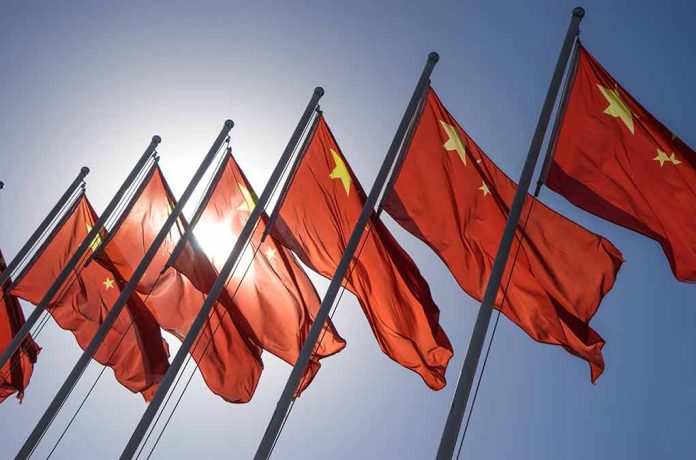
China’s military expansion in Southeast Asia challenges U.S. influence, prompting allies to unite against Beijing’s aggressive tactics in the South China Sea.
At a Glance
- China is expanding military alliances in Southeast Asia to counter U.S. influence
- U.S. allies and partners are increasingly acting together to deter Chinese aggression
- Chinese forces have been harassing economic activities and interfering with navigation rights
- The U.S. is allocating $475 million to enhance Southeast Asian partners’ maritime security
- Tensions between China and the Philippines have escalated around the Spratly Islands
China’s Expanding Military Influence
In recent years, China has significantly ramped up its efforts to assert control over the South China Sea, causing concern among U.S. officials and regional allies. Beijing’s aggressive tactics include constructing military outposts in the Spratly Islands and using its coast guard to harass other nations’ vessels. These actions have not gone unnoticed, as the international community increasingly rallies to counter Chinese expansionism.
The United States Department of Defense has taken note of China’s provocative behavior. Lindsey Ford, deputy assistant secretary of defense for South and Southeast Asia, recently testified before the House Foreign Affairs Committee about the alarming developments in the region. Ford highlighted the importance of collaboration with allies to maintain stability and deter further Chinese aggression.
Renaming the #SouthChinaSea
The issue of renaming the South China Sea has been suggested by various observers to counterbalance China's growing assertiveness in the region.
The name "South China Sea" itself is a relic of a colonial era when European navigators charted the… pic.twitter.com/H8Zncjdiev
— Indo-Pacific News – Geo-Politics & Defense (@IndoPac_Info) September 28, 2024
U.S. and Allies Respond
In response to China’s military expansion, the United States and its allies are taking decisive action. The U.S. has allocated $475 million to bolster the maritime security capabilities of its Southeast Asian partners. This substantial investment demonstrates America’s commitment to preserving freedom of navigation and protecting the sovereignty of nations in the region.
“Close collaboration with our allies and partners is foundational to sustaining and strengthening deterrence in the Indo-Pacific region, including in the South China Sea,” Ford said. “We cannot confront complex and interconnected challenges alone, and the South China Sea is no exception.” – Source
The U.S. is not acting alone in this effort. Countries such as Australia, Japan, Canada, the United Kingdom, and the European Union have all condemned China’s behavior in the South China Sea. This unified front sends a clear message to Beijing that its aggressive actions will not be tolerated by the international community.
Escalating Tensions
The situation in the South China Sea has become increasingly volatile, with tensions between China and the Philippines reaching a boiling point. Chinese coast guard vessels have repeatedly blocked supplies to the Philippine marine detachment stationed on the BRP Sierra Madre, a World War II-era ship intentionally grounded on Second Thomas Shoal in the Spratly Islands.
“The [Chinese military] has sharply increased coercive and risky operational behavior in the air and at sea, threatening lawfully operating American, allied and partner forces,” she said. “This includes sinking Vietnamese fishing vessels, using military aircraft to harass Malaysian offshore energy exploration, flying within 20 feet of U.S. military aircraft and deploying water cannons and military grade lasers to block and target Philippine resupply boats headed toward Second Thomas Shoal.” – Source
These aggressive tactics have not only endangered Philippine sailors but have also drawn sharp criticism from the United States. The U.S. has reaffirmed its commitment to the Philippines under the Mutual Defense Treaty, stating that its defense obligations extend to armed attacks in the South China Sea. This declaration serves as a deterrent to further Chinese aggression and underscores the importance of the U.S.-Philippine alliance.
Looking Ahead
As tensions continue to simmer in the South China Sea, the United States and its allies remain vigilant. The Department of Defense is taking a proactive approach to counter Chinese coercion, including building asymmetric advantages for allies and partners. This strategy involves conducting complex military operations and exercises in the region to ensure strong deterrence.
“Over the past year, we’ve seen an unprecedented number of states enhance efforts to support rule of law in the South China Sea, which is a very encouraging development,” Ford said. – Source
The United States is also diversifying its force posture with regular rotational deployments and new defense cooperation sites in the Philippines. These measures, combined with support for multi-lateral and mini-lateral coalitions, aim to enhance regional security architecture and present a united front against Chinese expansionism. As the situation evolves, the international community remains committed to upholding the rule of law and maintaining stability in this critical region.
Sources:
- U.S. Official Says Allies Acting Together to Deter China
- HE PUZZLE OF CHINESE ESCALATION VS RESTRAINT IN THE SOUTH CHINA SEA














